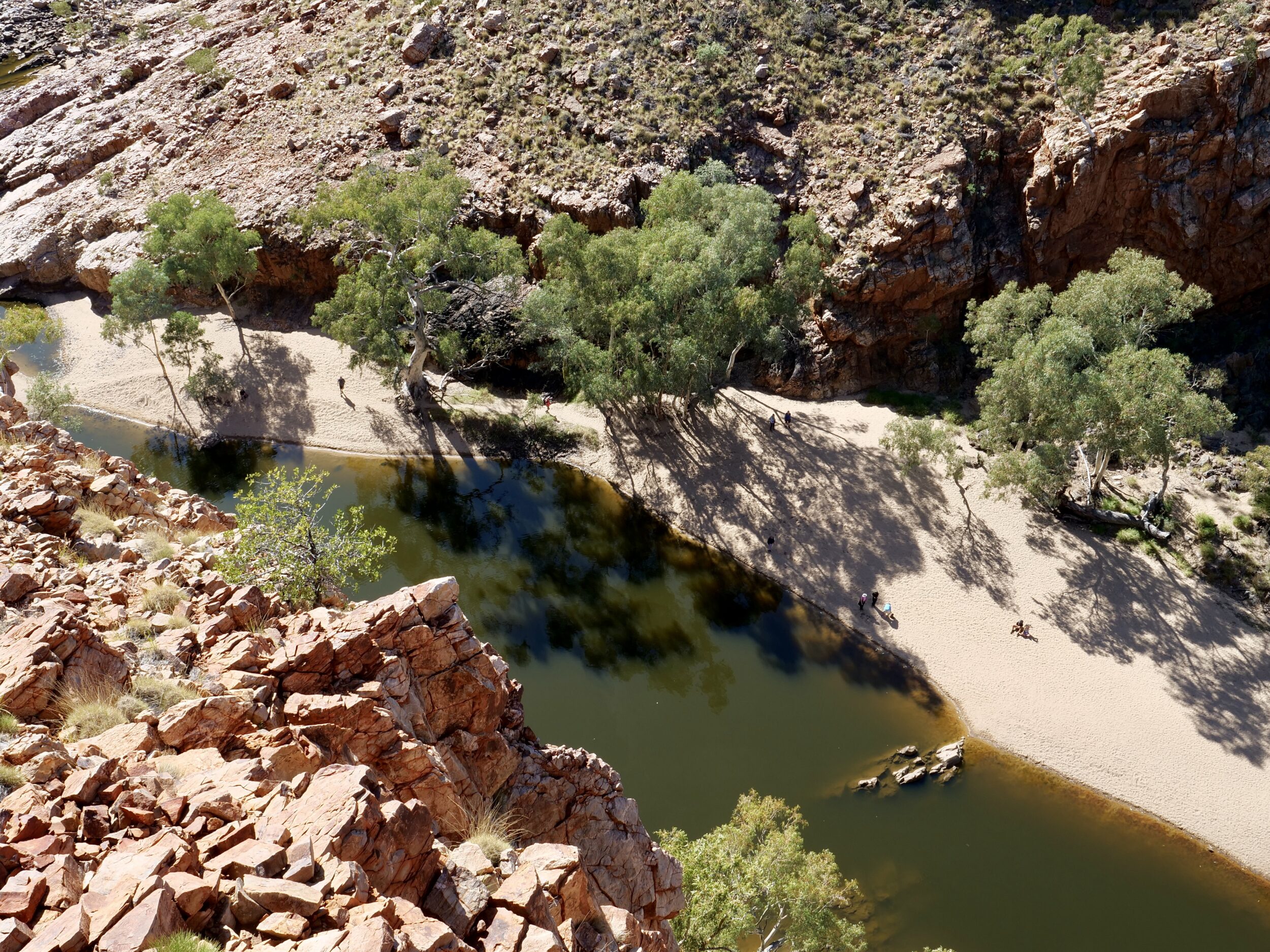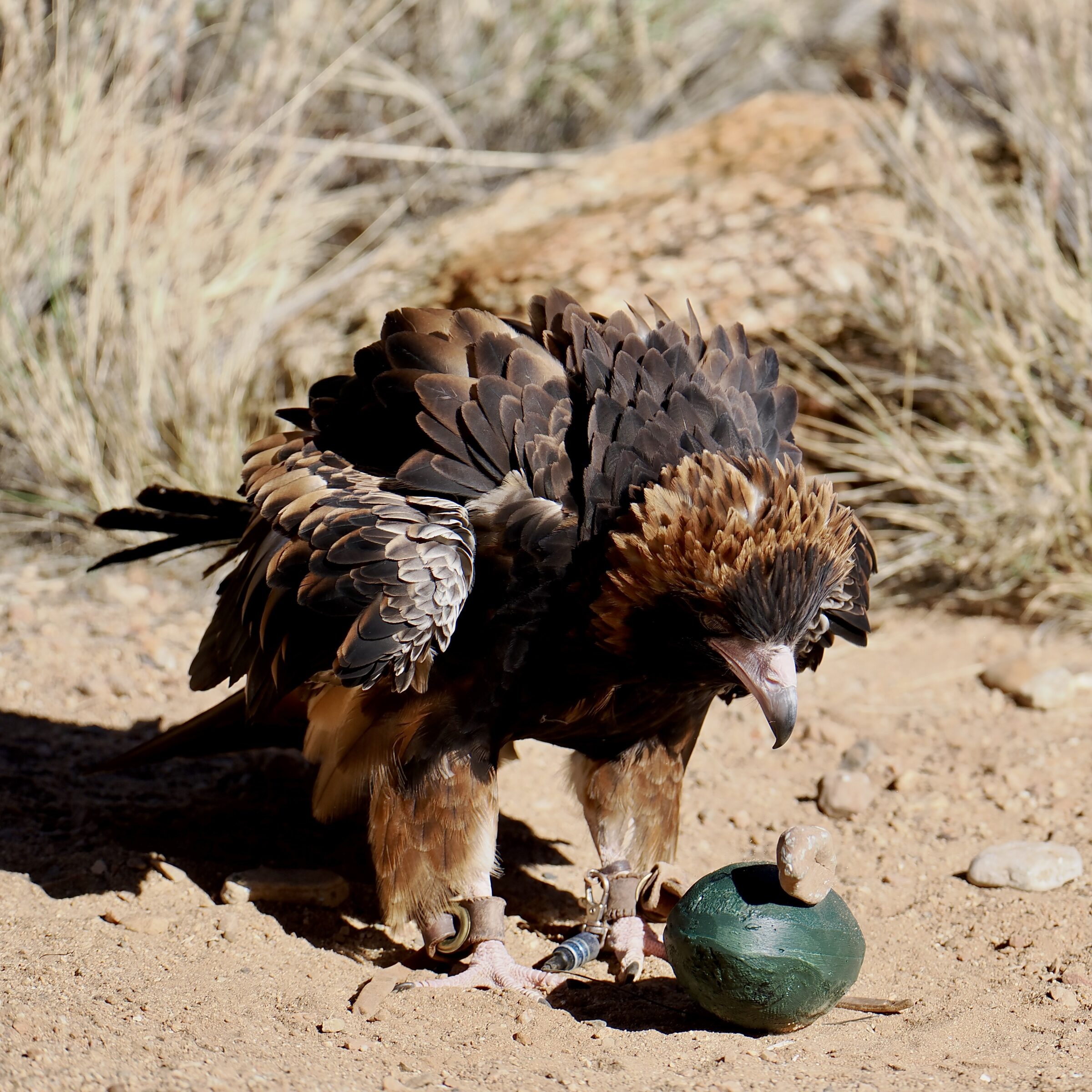Q: what on earth is a human’s freshly-powdered palm – pictured below – doing in this particular series?
Comments closedCategory: Australia (not WA)
This post’s photo was taken circa 10 kilometres away from Ormiston Gorge.
The vantage point was just a couple of kilometres north of Glen Helen, and the image looks north-east.
In the foreground you can see the Finke River, which is oft-described as the world’s oldest.
I am pretty sure that the highest mountain you can see (on the horizon’s right hand side) is Mt Giles (1,389 metres ASL) which is on the eastern side of Ormiston Pound; Mt Giles’ peak is the highest point on the Pound’s ramparts.
As you can see, this particular desert country does not fit most urban-dwelling humans’ preconceptions of what deserts are “meant” to look like!
Comments closed
This first episode’s headline is neither a mistake, nor ironic.
If you live in or near to Alice Springs, the nearest ocean shore is more than 1,500 kilometres distant; most of Australia’s saltwater beaches are rather more than 2,000 kilometres away.
However, courtesy of the MacDonnell Ranges, which spread hundreds of kilometres east-west-ish from Alice, you have easy access to some very beautiful beaches.
(Alice Springs sits just north of one of the Ranges’ “Gaps”)
A few of those beaches even offer swimming, in spectacularly located, “permanent” waterholes,
Comments closed
Both photos from same morning and location as previous post, but taken 8 minutes later…with self and ‘roos both on the brrrrrrisk outside of Goondooloo Cottage.
Comments closed
In South Australia’s Deep Creek Conservation Park, those who hire Goondooloo Cottage can expect to see Western grey kangaroos, just outside the walls and windows.
This is especially likely in the first and final hours of daylight.
Comments closed
Once aloft, a wedge-tailed eagle generally appears “effortless”.
However, on the ground, wedge-tails are quite “clumsy”, and getting airborne again is decidedly (and obviously) effortful for any eagle in flattish terrain.
Comments closed
The wedge-tailed eagle is Australia’s largest raptor.
It is one of the world’s largest raptors, and is almost certainly the most abundant of any of the world’s big eagles.
Wedge-tails range across almost all of Australia.
They are, however, very “difficult”, photographically speaking.
Until the fifth afternoon of June 2023 I had never taken a “successful” photo of an airborne wedge-tail.
One Comment
On the 5th day of March 2023 my beloved and I ate a delicious lunch, al fresco, just outside a tiger sanctuary in southern India.
On the 18th of March 2018 in southern Tasmania, the food, the winery’s Pinot Noir and our lunch’s quasi-natural setting were all lovely.
However, as so often proves true, in both the above cases it was one of our fellow diners who made our lunch unforgettable.
Neither of them had made a booking.
We were unable to converse.
We never discovered their names…
Comments closed
Until Charles Darwin observed finches at work in the Galapagos, many members of our own species had believed that tool-usage was a uniquely human ability/trait.
The known list of non-human tool-users is now enormous.
It includes many mammals (not only primates), birds, fish, cephalods, reptiles, and insects.
One of them is an Australian raptor which deploys rocks to crack emu eggs.
You may be surprised to know that the pictured individual did not learn the technique from his or her parents, nor did this captive bird’s human “keepers” train him or her to do it.
One CommentAs previously reported, I think that – within the so-called “First World”, at least – South Australia is the world leader in poor signage on roads and tracks.
Often, necessary signage is non-existent, or impossible to read until/unless one is within a metre or less of the ludicrously tiny and/or long-faded signpost.
Not uncommonly, signposts are entirely illegible.
Very often, signage is maddeningly inconsistent.
Picture yourself in rural or “outback” South Australia – or even in a near-Adelaide place where you have dared to “get off the freeway”.
Your intended destination is bigger than Woop Woop but much smaller than Adelaide.
At the first relevant turn-off you are pleased to see a legible sign which points to “bigger than Woop Woop…”
However, none of the next six crossroads carry any legible signage whatsoever…or their legible signs make no mention of your destination.
What should/could have taken you 30 minutes and 40 kilometres, instead devours 70 minutes and 90 kilometres.
Another South Australian specialty is the placement of “No Through Road” signage only at the relevant road’s dead end.
Having traversed thousands of SA kilometres over 68 years, I had assumed that South Australia’s signs – and their oft-ludicrous absence – had long-since exhausted their ability to surprise me…
As I recently discovered, in a “remote” place, I had underestimated them!
The relevant sign was very well crafted, easy to see and read…and utterly superfluous.
One Comment






